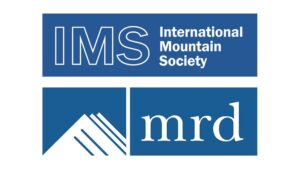PS 3.104
Lessons learned from the TEAMx field Campaign
Details
Full Title
PS 3.104: Do we need more atmospheric data in mountainous terrain? – the TEAMx field campaign and what we can learn from itScheduled
Session:
2025-09-17, 18:00 - 19:30 (LT), SOWI – HS 2Session:
2025-09-17, 18:00 - 19:30 (LT), SOWI – HS 2Convener
Co-Convener(s)
Lehner, Manuela; Ban, Nikolina; and Zardi, DinoAssigned to Synthesis Workshop
---Thematic Focus
#IMC25, AtmosphereKeywords
TEAMx, Atmospheric Observations, Atmospheric Services, Climate Services
Description
Atmospheric transport and exchange processes are much less well understood over mountainous terrain than correspondingly flat landscapes. This profoundly impacts the accuracy and reliability of system service modelling – e.g., for hydrological, agricultural, health-related or high-impact weather modelling. The TEAMx (Multi-scale Transport and Exchange processes in the Atmosphere over Mountains – programme and eXperiment) community has conducted the TEAMx Observational Campaign (TOC) on a cross-section through the Alps, to collect data at high temporal and spatial resolution with the goal to test and improve atmospheric models for weather and climate and hence the input to system service modeling. For a year, with two periods of extended observations (in winter, in summer, respectively), the cross-section along the Adige Valley – the Brenner Pass – crossing the Inn Valley – to the Alpine foreland was equipped with about 40 sites, including surface-based remote sensing instruments measuring profiles of wind, temperature, humidity, aerosol concentration; radars to observe precipitation/ pre-precipitation conditions, radio sounding sites, surface turbulence sites – and countless ‘weather stations’ and additional instrumentation. In this session we address the challenges of atmospheric transport processes over mountainous terrain and the ‘traps’ that non-specialists may face when using standard meteorological or climatological information over mountainous terrain for their applications and services. Also, an overview of the newly acquired data from the TOC and its applicability will be provided, together with some recent analysis (including numerical modeling) results.
| ’00 – ’20 What’s the problem? And what is TEAMx? Mathias Rotach (UIBK) |
| ’20 – ’40 The TEAMx Observational Campaign Manuela Lehner (UIBK) |
| ’40 – ’60 Applications: numerical modeling Stefano Serafin (UVIE, Uni Wien) |
| ’60 – ’80 Applications: Use of TEAMx data in environmental assessments Dino Zardi (UTn, Uni Trento) |
| ’80 – ’90 Discussion & suggestions from the audience |
(times are for 15‘ presentations and 5‘ questions)


